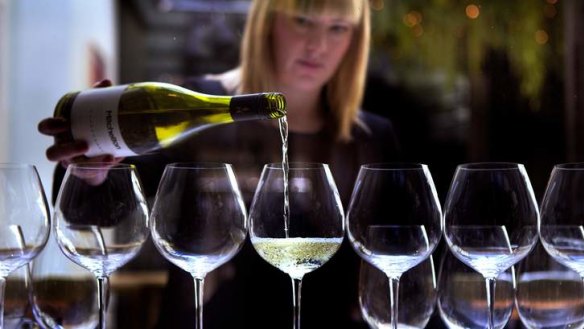What is the correct level to fill a wine glass?

What is the correct level to fill a wine glass?
A moment, please, while I don my high-vis vest for a public safety announcement. What follows has nothing to do with standard drink pours or government-approved alcohol unit measures, so don't be thinking it does. In my misspent youth, the correct level to fill a wine glass at a nightclub or pub, and in many private homes, was "right to the top, thanks". Shoulder pads were big, wine glasses were small and only card-carrying wine tragics bothered sniffing and swirling their wine.
Larger glasses, with room for a decent pour of wine to be safely swirled and capture the resulting aromas, didn't really make it into the mainstream until the 1990s. When the trend got under way in upmarket restaurants and wine bars, there was an awkward transition characterised by unhappy exchanges between customers and staff: "Excuse me, I ordered a glass of wine, not half of one."
Things have changed so much that the typical household now owns wine glasses with bowls sized somewhere between a newborn's head and Bob Katter's hat.
As a rule of thumb, the bigger the glass, the lower the pour level. Chez Auntie, our preferred all-purpose wine glasses, have a volume of about 350 millilitres and work nicely filled about one-third of the way up. Glasses with a smaller volume, such as 150-millilitre champagne flutes, can be poured two-thirds full - although, if you're a champagne nut, you might prefer a larger tulip-shaped glass filled to a lower level. As with so many things in life, it's helpful to have a sense of proportion.